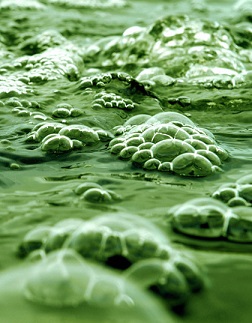Blue-green blooms get broad response
 Toxic blue-green algae has appeared in sections of the NSW’s Menindee Lakes.
Toxic blue-green algae has appeared in sections of the NSW’s Menindee Lakes.
The lakes are the main source of drinking water for nearby Broken Hill, but authorities from the Sunraysia Regional Algal Coordinating Committee say the normal treatment process will be enough to kill it.
Blooms have been recorded in Lake Wetherell and Lake Tandure, but the Department of Primary Industries says it may have moved already, as blooms can quickly appear and disappear.
“A red alert level warning indicates that waters are unsuitable for recreational use or primary contact by humans and may also pose a threat to livestock and domestic animals,” the committee said in a statement.
“The species of blue-green algae identified are potentially toxic and may cause gastroenteritis in humans if consumed, and skin and eye irritations after contact.”
The committee says boiling water will not kill the algae, and locals must avoid any bright-green areas of water, green scum or distinct earthy or musty odours near water.
“There is some evidence that small quantities of algal toxins may enter fish flesh,” the committee said.
“Fish caught should not be eaten, and people should not eat mussels, crayfish or the internal organs of fish from red alert areas.”
Meanwhile, in South Australia, hot weather has prompted the SA Environment Department to release water into the River Torrens to try to prevent blue green algae from blooming in the Torrens Lake.
The lake, near Adelaide's CBD, has been flushed with water from upstream reservoirs in a series of controlled releases.
The Environment Department says the same measures worked well during the past two summers, keeping blue green algal growth below levels that would otherwise force the closure of the lake.
The measures come a few months after hydrogen peroxide was added to the Torrens Lake to treat an algal bloom.








 Print
Print